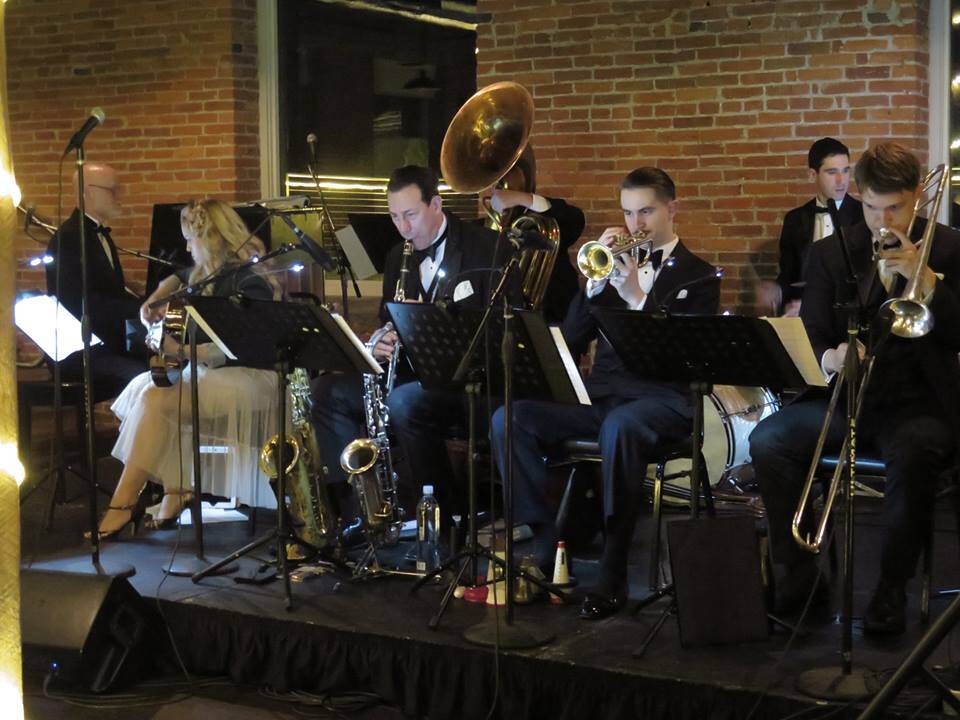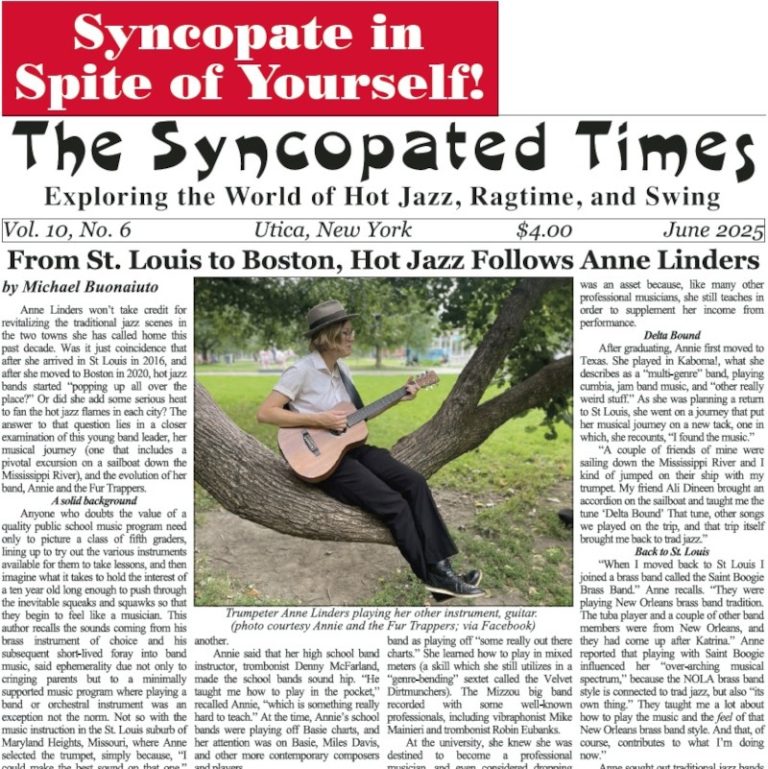In this dim and chilly season, as snowbirds migrate south and leaves fall from the trees, I turn from my preoccupation with my own foibles and bellyaches to rail at the harvest of loss each rotation of the earth seems to bring. Even the mellow boon of pumpkin spice in whatever beverage I may choose cannot snap me out of these dire reflections. I begin to wonder: Who will care as much as we do about what we love when we are gone?
I see jazz festivals, jazz clubs, and jazz bands winking out of existence like distant, spent stars. Some are hanging on and even prospering for the time being. Some clubs implore young people to attend, in a last-ditch attempt to get someone to perpetuate what they grew and nurtured. Yes, these clubs were full of young people when they started—fifty years ago. And those young people were us. What now?
Some years ago I deconstructed the term “Our Kind of Music,” which I felt had the effect of a No Admittance sign on the door of the (exclusive) club—though a universally enjoyable sound might be heard within. It is almost as if we wanted to take it with us, to be interred with it like Tutankhamen, to have it cheer us through eternity. I know that isn’t actually so, of course. We’d love to have a new generation take up the music we love. The problem is, how do we take what is ours and help them to make it theirs?
Since immersing myself in old jazz while producing my radio program and publishing The Syncopated Times, I’ve delighted in the droves of excellent young, scholarly musicians who have captured the sound and the spirit of the music. This is no small feat for those not actually born in 1904. They approach 1920s and 1930s jazz and pop as classically-trained instrumentalists delve into Mozart, Chopin, and Brahms. There is joy and passion in all of it, revealed through study, practice, and performance.
I suppose I would be more sanguine still if these young virtuosi were performing for people their own age. And I have been to events where that was in fact the case. My first column for this paper celebrated a dance where my wife and I were among the oldest people in attendance. That dance was in September 2015. I’m still waiting for the Jazz Renaissance. As I admitted in my February 2016 column, “I am suspicious of anything that gives me hope. So I couldn’t immediately fathom the prospect of the music I love possibly not being doomed.”
We might have to consider a radical operation, just for the music’s survival. The Sound may have to be surgically separated from Nostalgia. Memory Lane, once beloved, now appears to be paved with land mines. (My condolences to the shade of Joe Franklin.) Those same scholarly young people I praised earlier have taken a deep dive into the historical narrative through the portal of Howard Zinn and discovered just how distorting those rose-colored glasses are. They are loath to embrace even the sweetest cultural artifacts of our colonialist, imperialist, racist, sexist, everything-phobic past.
Despite the rallying cry of vintage-lifestyle enthusiasts I know (“Vintage style—not vintage values!”) the majority of young people recoil at putting on Grandpa’s shoes. They don’t want any part of the awfulness of the past (though the awfulness of the present remains to be judged). When Gramps’ wingtips do get worn, it may be a fad of the season, after which they go right back in the closet. They’re so much more stylish than anything else they own, but—you know.

Likewise, the Sound in question is joyous and salubrious. I’ve referred to it as “The Pulse of Life.” It diverts the gaze from one’s navel and onto the possibility that new each day may bring. Would it survive if one were able to disassociate it from the Bad Old Days? Must each 1920s song include a history lesson, leaving a bitter aftertaste?
I’m not talking about relevance. Making ancient jazz relevant (assuming it is still appropriate to use the word “jazz”) is like trying to make Brahms relevant. Either you get it or you don’t. Brahms had foibles galore but his late piano pieces are among the most enchanting music ever written. I don’t care what he would have posted on his Twitter feed—if they’d had such a thing in 1888. But there are those who maintain you’re somehow a bad person if you enjoy music written by a bad person. Fine by me.
A possible work-around lies in the easing of copyright control for 1920s music. As has been done throughout history, a piece of music may be “upcycled” with new lyrics. (You have no further to look than “The Star Spangled Banner.”) In 2023, all songs written in 1927 will be released from copyright—and there are some beauties in there. Take one of those delightful tunes, dress it up with new words, and voila!
If I have misgivings, it’s that so few lyricists have the craft of Lorenz Hart, Ira Gershwin, Dorothy Fields, or Irving Berlin. They knew rhyming and scansion. When many people try to write in the old style today, the non-rhymes and bad scans grate on the ears. Songwriting isn’t horseshoes. I know writers today believe that saying exactly what they mean is more important than force-fitting their thoughts on a grid of precise rhyme and meter. However, the old song-forms demand that precision. Practice and discipline—as you’d exercise in learning an instrument—will get you there.
Ultimately, though, perhaps the best way to save old music is to make it new again. Think of it as resoling Grandpa’s shoes.





















